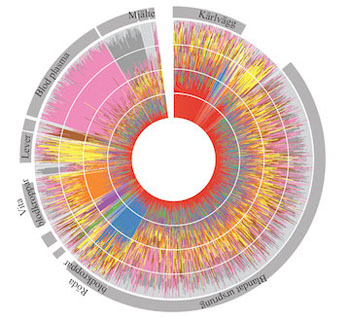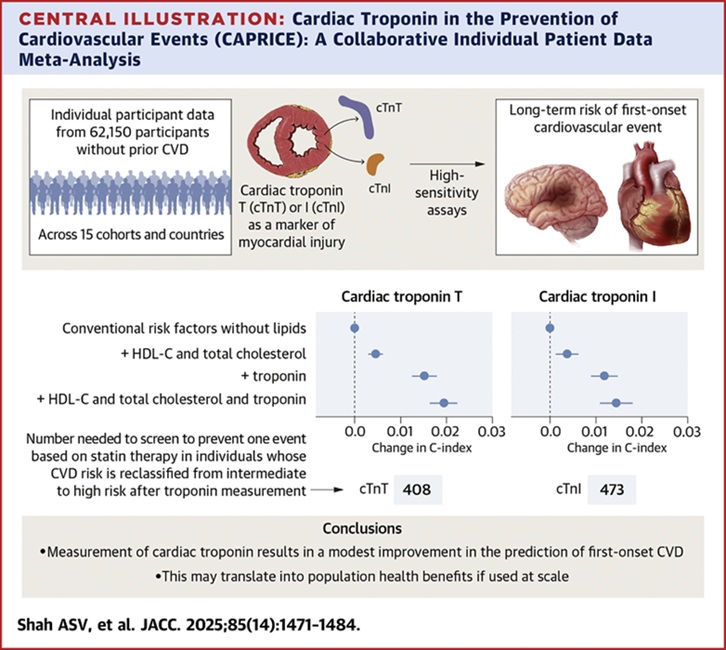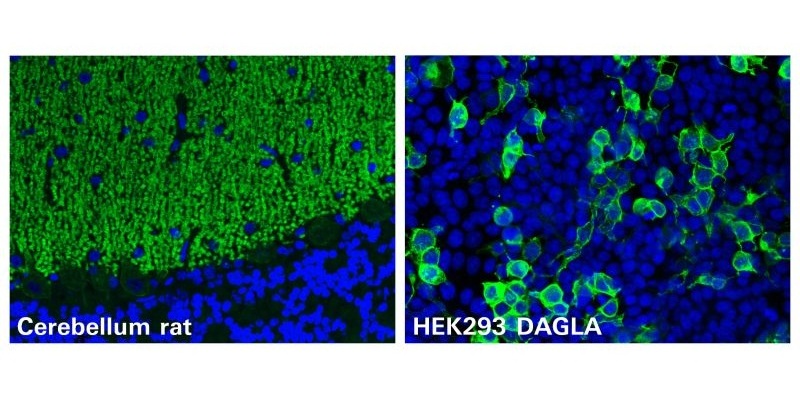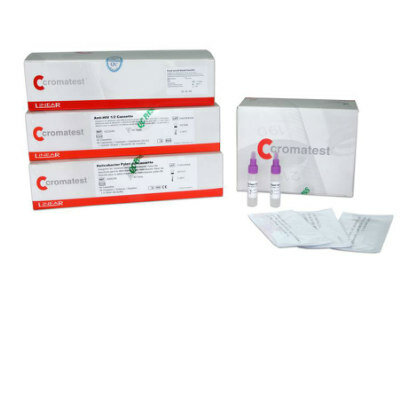Protein Patterning: Novel Tool for Studying Sepsis
|
By LabMedica International staff writers Posted on 18 Jan 2016 |

Image: Graph of mass-spectrometry-based mapping of tissue-specific protein in blood plasma, from the study of sepsis using quantitative targeted proteomics (Photo courtesy of Malmström laboratory, Lund University).
In a new approach using quantitative targeted proteomics, researchers have for the first time developed a way to use mass-spectrometry to measure hundreds of organ proteins in a single blood sample. The resulting protein patterns can help determine sepsis severity, which organs have been damaged, and may lead to faster diagnostics.
“We use the blood as a mirror reflecting what happens in the body,” said Johan Malmström biomedical scientist at Lund University (Lund, Sweden), whose brothers, medical intern Erik Malmström (Lund U.) and bioinformatician Lars Malmström University of Zurich (Zurich, Switzerland) are fellow researchers on the study. The team has succeeded to map the majority of all detected proteins from vital organs (e.g., heart, lung, liver, spleen, blood vessels) and have listed which proteins were specific to each organ.
“If you see in a blood sample that the amount of proteins from a specific organ significantly increases, it indicates damage to this organ. The method provides an understanding of the molecular events that take place during the course of a disease, and the possibility, using the same analysis, to study how different organs are affected”, explained Dr. E. Malmström.
Sepsis is a very complicated and precarious condition in which the immune system starts to react erroneously in different ways to the bacterial infection. It is often difficult to diagnose because symptoms (including high breathing rate, fever, rapid pulse, pain, confusion) occur in milder conditions as well. Disease progression can be very fast and become fatal within a few hours. Therefore, there is a great need for faster diagnosis and better understanding of the course of the disease.
Another researcher, Dr. Adam Linder (Lund U.), has begun to develop a diagnostic method based on HBP, a protein emitted from white blood cells and reflects the risk of hypotension. The Malmström group’s study of hundreds of different proteins could eventually be used to select other important proteins that can serve as biomarkers for different aspects of sepsis.
The new method is already an important research tool: “There is so much we don’t know about sepsis. Why do not all patients react the same way—why do some organs suffer the most damage in some patients and not in others? Do different bacteria cause the disease to progress? Can you divide patients into different subgroups, or bacteria, or does each new combination of patients and bacteria lead to a specific form of sepsis?” asked Dr. E. Malmström. The researchers have conducted their studies on animals and are now moving on to human tissue. Through a collaboration with surgeons at Skane University Hospital they have obtained samples of healthy tissue. Protein patterns of these samples can then be compared with the corresponding organ tissues in sepsis patients.
“Protein mapping like this has never been done before. The method can also be applied to other diseases for studying how pathological changes in various organs are reflected in a blood sample,” said Dr. Johan Malmström.
The study, by Malmström E, Kilsgard O, Hauri S, Smeds E, Herwald H, Malmström L, & Malmström J, was published January 6, 2016, in the journal Nature Communications.
Related Links:
Lund University
University of Zurich
“We use the blood as a mirror reflecting what happens in the body,” said Johan Malmström biomedical scientist at Lund University (Lund, Sweden), whose brothers, medical intern Erik Malmström (Lund U.) and bioinformatician Lars Malmström University of Zurich (Zurich, Switzerland) are fellow researchers on the study. The team has succeeded to map the majority of all detected proteins from vital organs (e.g., heart, lung, liver, spleen, blood vessels) and have listed which proteins were specific to each organ.
“If you see in a blood sample that the amount of proteins from a specific organ significantly increases, it indicates damage to this organ. The method provides an understanding of the molecular events that take place during the course of a disease, and the possibility, using the same analysis, to study how different organs are affected”, explained Dr. E. Malmström.
Sepsis is a very complicated and precarious condition in which the immune system starts to react erroneously in different ways to the bacterial infection. It is often difficult to diagnose because symptoms (including high breathing rate, fever, rapid pulse, pain, confusion) occur in milder conditions as well. Disease progression can be very fast and become fatal within a few hours. Therefore, there is a great need for faster diagnosis and better understanding of the course of the disease.
Another researcher, Dr. Adam Linder (Lund U.), has begun to develop a diagnostic method based on HBP, a protein emitted from white blood cells and reflects the risk of hypotension. The Malmström group’s study of hundreds of different proteins could eventually be used to select other important proteins that can serve as biomarkers for different aspects of sepsis.
The new method is already an important research tool: “There is so much we don’t know about sepsis. Why do not all patients react the same way—why do some organs suffer the most damage in some patients and not in others? Do different bacteria cause the disease to progress? Can you divide patients into different subgroups, or bacteria, or does each new combination of patients and bacteria lead to a specific form of sepsis?” asked Dr. E. Malmström. The researchers have conducted their studies on animals and are now moving on to human tissue. Through a collaboration with surgeons at Skane University Hospital they have obtained samples of healthy tissue. Protein patterns of these samples can then be compared with the corresponding organ tissues in sepsis patients.
“Protein mapping like this has never been done before. The method can also be applied to other diseases for studying how pathological changes in various organs are reflected in a blood sample,” said Dr. Johan Malmström.
The study, by Malmström E, Kilsgard O, Hauri S, Smeds E, Herwald H, Malmström L, & Malmström J, was published January 6, 2016, in the journal Nature Communications.
Related Links:
Lund University
University of Zurich
Latest Microbiology News
- Handheld Device Delivers Low-Cost TB Results in Less Than One Hour
- New AI-Based Method Improves Diagnosis of Drug-Resistant Infections
- Breakthrough Diagnostic Technology Identifies Bacterial Infections with Almost 100% Accuracy within Three Hours
- Innovative ID/AST System to Help Diagnose Infectious Diseases and Combat AMR
- Gastrointestinal Panel Delivers Rapid Detection of Five Common Bacterial Pathogens for Outpatient Use
- Rapid PCR Testing in ICU Improves Antibiotic Stewardship
- Unique Genetic Signature Predicts Drug Resistance in Bacteria
- Unique Barcoding System Tracks Pneumonia-Causing Bacteria as They Infect Blood Stream
- Rapid Sepsis Diagnostic Test Demonstrates Improved Patient Care and Cost Savings in Hospital Application
- Rapid Diagnostic System to Detect Neonatal Sepsis Within Hours
- Novel Test to Diagnose Bacterial Pneumonia Directly from Whole Blood
- Interferon-γ Release Assay Effective in Patients with COPD Complicated with Pulmonary Tuberculosis
- New Point of Care Tests to Help Reduce Overuse of Antibiotics
- 30-Minute Sepsis Test Differentiates Bacterial Infections, Viral Infections, and Noninfectious Disease
- CRISPR-TB Blood Test to Enable Early Disease Diagnosis and Public Screening
- Syndromic Panel Provides Fast Answers for Outpatient Diagnosis of Gastrointestinal Conditions
Channels
Clinical Chemistry
view channel
‘Brilliantly Luminous’ Nanoscale Chemical Tool to Improve Disease Detection
Thousands of commercially available glowing molecules known as fluorophores are commonly used in medical imaging, disease detection, biomarker tagging, and chemical analysis. They are also integral in... Read more
Low-Cost Portable Screening Test to Transform Kidney Disease Detection
Millions of individuals suffer from kidney disease, which often remains undiagnosed until it has reached a critical stage. This silent epidemic not only diminishes the quality of life for those affected... Read more
New Method Uses Pulsed Infrared Light to Find Cancer's 'Fingerprints' In Blood Plasma
Cancer diagnoses have traditionally relied on invasive or time-consuming procedures like tissue biopsies. Now, new research published in ACS Central Science introduces a method that utilizes pulsed infrared... Read moreMolecular Diagnostics
view channel
Simple Blood Test Improves Heart Attack and Stroke Risk Prediction
Troponin is a protein found in heart muscle cells that is released into the bloodstream when the heart is damaged. High-sensitivity troponin blood tests are commonly used in hospitals to diagnose heart... Read more
Blood Biomarker Test Could Detect Genetic Predisposition to Alzheimer’s
New medications for Alzheimer’s disease, the most common form of dementia, are now becoming available. These treatments, known as “amyloid antibodies,” work by promoting the removal of small deposits from... Read more
Novel Autoantibody Against DAGLA Discovered in Cerebellitis
Autoimmune cerebellar ataxias are strongly disabling disorders characterized by an impaired ability to coordinate muscle movement. Cerebellar autoantibodies serve as useful biomarkers to support rapid... Read more
Gene-Based Blood Test Accurately Predicts Tumor Recurrence of Advanced Skin Cancer
Melanoma, an aggressive form of skin cancer, becomes extremely difficult to treat once it spreads to other parts of the body. For patients with metastatic melanoma tumors that cannot be surgically removed... Read moreHematology
view channel
New Scoring System Predicts Risk of Developing Cancer from Common Blood Disorder
Clonal cytopenia of undetermined significance (CCUS) is a blood disorder commonly found in older adults, characterized by mutations in blood cells and a low blood count, but without any obvious cause or... Read more
Non-Invasive Prenatal Test for Fetal RhD Status Demonstrates 100% Accuracy
In the United States, approximately 15% of pregnant individuals are RhD-negative. However, in about 40% of these cases, the fetus is also RhD-negative, making the administration of RhoGAM unnecessary.... Read moreImmunology
view channel
Stem Cell Test Predicts Treatment Outcome for Patients with Platinum-Resistant Ovarian Cancer
Epithelial ovarian cancer frequently responds to chemotherapy initially, but eventually, the tumor develops resistance to the therapy, leading to regrowth. This resistance is partially due to the activation... Read more
Machine Learning-Enabled Blood Test Predicts Immunotherapy Response in Lymphoma Patients
Chimeric antigen receptor (CAR) T-cell therapy has emerged as one of the most promising recent developments in the treatment of blood cancers. However, over half of non-Hodgkin lymphoma (NHL) patients... Read morePathology
view channel
Spit Test More Accurate at Identifying Future Prostate Cancer Risk
Currently, blood tests that measure the level of a protein called prostate-specific antigen (PSA) are commonly used to identify men at higher risk for prostate cancer. This test is typically used based... Read moreDNA Nanotechnology Boosts Sensitivity of Test Strips
Since the Covid-19 pandemic, most people have become familiar with paper-based rapid test strips, also known as lateral flow immunoassays (LFIAs). These tests are used to quickly detect biomarkers that... Read more
Novel UV and Machine Learning-Aided Method Detects Microbial Contamination in Cell Cultures
Cell therapy holds great potential in treating diseases such as cancers, inflammatory conditions, and chronic degenerative disorders by manipulating or replacing cells to restore function or combat disease.... Read moreTechnology
view channel
Disposable Microchip Technology Could Selectively Detect HIV in Whole Blood Samples
As of the end of 2023, approximately 40 million people globally were living with HIV, and around 630,000 individuals died from AIDS-related illnesses that same year. Despite a substantial decline in deaths... Read more
Pain-On-A-Chip Microfluidic Device Determines Types of Chronic Pain from Blood Samples
Chronic pain is a widespread condition that remains difficult to manage, and existing clinical methods for its treatment rely largely on self-reporting, which can be subjective and especially problematic... Read more
Innovative, Label-Free Ratiometric Fluorosensor Enables More Sensitive Viral RNA Detection
Viruses present a major global health risk, as demonstrated by recent pandemics, making early detection and identification essential for preventing new outbreaks. While traditional detection methods are... Read moreIndustry
view channel
Cepheid and Oxford Nanopore Technologies Partner on Advancing Automated Sequencing-Based Solutions
Cepheid (Sunnyvale, CA, USA), a leading molecular diagnostics company, and Oxford Nanopore Technologies (Oxford, UK), the company behind a new generation of sequencing-based molecular analysis technologies,... Read more
Grifols and Tecan’s IBL Collaborate on Advanced Biomarker Panels
Grifols (Barcelona, Spain), one of the world’s leading producers of plasma-derived medicines and innovative diagnostic solutions, is expanding its offer in clinical diagnostics through a strategic partnership... Read more



















